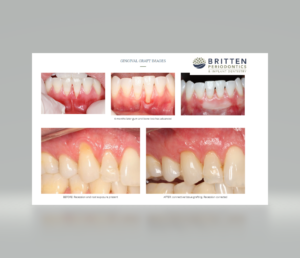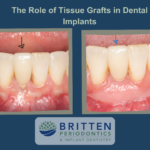Gum Grafting Can Improve Your Oral Health – Here’s How!
When recession of the gum tissue occurs, the body loses a natural defense against both bacterial penetration and trauma. When gum recession is a problem, gum reconstruction using grafting techniques is an excellent option.
When there is only minor recession, some healthy gum tissue often remains and protects the tooth, so that no treatment other than modifying home care practices is necessary. However, when no firm gum tissue remains, this leaves the roots of the teeth and the underlying bone relatively unprotected, which could result in root sensitivity, bacterial penetration, decay and even loss of teeth.
A gingival graft is designed to address these problems. A thin piece of tissue is taken from the roof of the mouth or gently moved over from adjacent areas to provide a stable band of attached gum tissue around the tooth. The gingival graft may be placed in such a way as to cover the exposed portion of the root, however, the main objective is to reestablish the protective barrier or layer of the gum around the tooth. Occasionally, the patient may need multiple procedures to achieve the ideal amount of root coverage.
Dr. Britten has trained in the latest minimally invasive techniques of gum grafting and can often perform the entire procedure through a pinhole incision.







